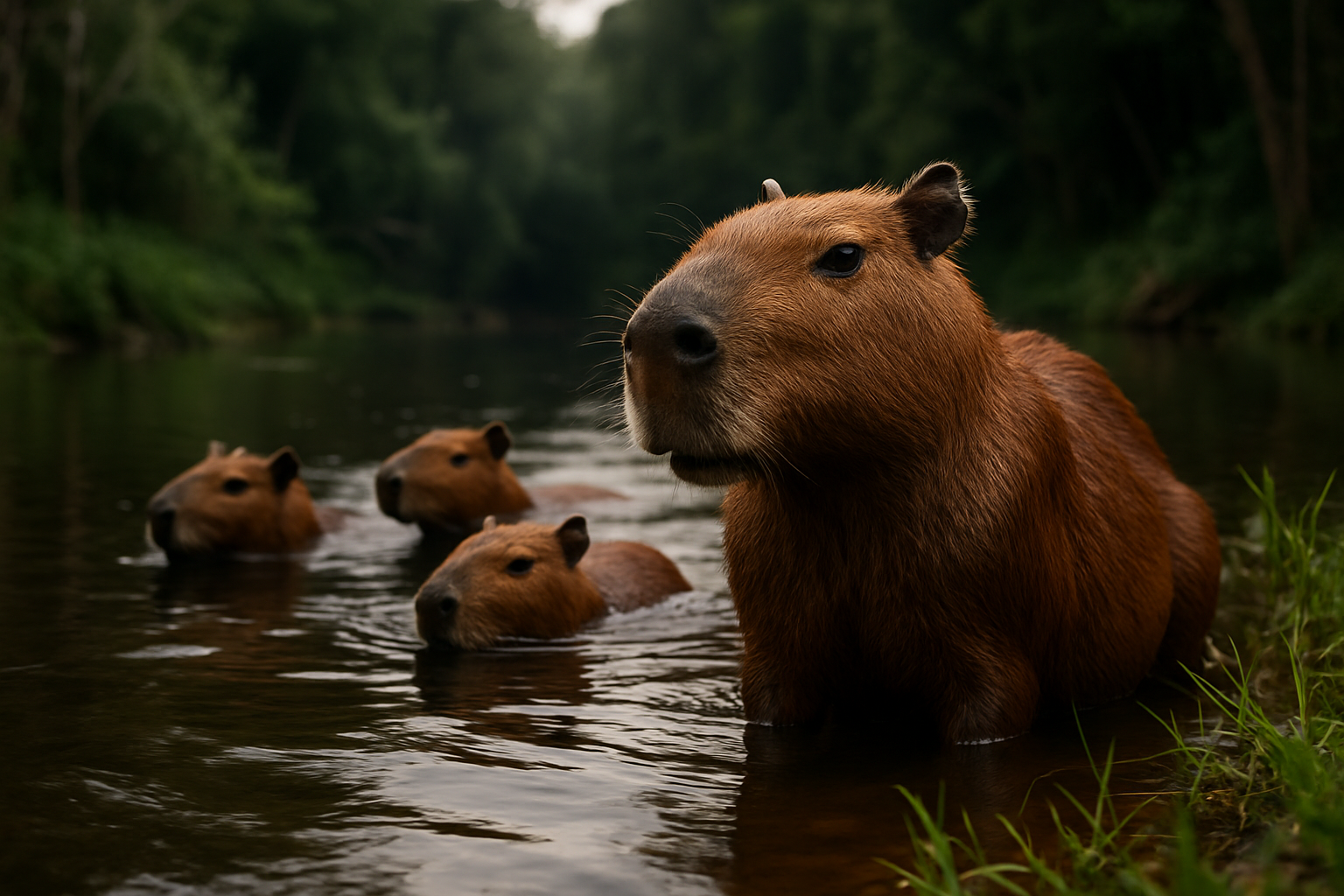Unraveling the Enigma of Capybara Social Dynamics
In the lush wetlands of South America, a fascinating creature captures the hearts of animal enthusiasts worldwide. The capybara, the world's largest rodent, boasts an intriguing social structure that rivals even the most complex primate societies. This article delves into the captivating world of capybara social dynamics, exploring their unique behaviors, communication methods, and the importance of their tight-knit communities.

The Evolution of Capybara Social Behavior
Capybaras have evolved over millions of years to become the social creatures we observe today. Their ancestors likely lived in smaller family units, but as they adapted to their semi-aquatic lifestyle, larger groups became advantageous for survival. This shift towards communal living has shaped their physical and behavioral traits, resulting in a species uniquely suited for cooperative existence.
The development of their social structure is closely tied to their habitat preferences. Capybaras thrive in areas with abundant water sources and grassy plains, environments that support large groups and facilitate social interactions. Over time, natural selection favored individuals with stronger social tendencies, leading to the complex social dynamics we observe in modern capybara populations.
Hierarchy and Leadership in Capybara Herds
Capybara herds, typically consisting of 10 to 40 individuals, operate under a well-defined social hierarchy. At the top of this structure sits the dominant male, who plays a crucial role in herd management and protection. This alpha male is usually the largest and most aggressive member of the group, earning his position through displays of strength and social prowess.
Beneath the dominant male, a hierarchy exists among females, with older and more experienced individuals often holding higher ranks. This structure helps maintain order within the group and ensures efficient decision-making in matters of foraging, movement, and conflict resolution. Interestingly, subordinate males often play supportive roles, assisting in herd defense and caring for young, showcasing the cooperative nature of capybara societies.
Communication Methods Among Capybaras
Capybaras employ a diverse array of communication methods to maintain social cohesion and convey important information within their herds. Vocalizations play a significant role, with capybaras using a range of sounds from low-pitched grunts to high-pitched whistles to express different emotions and alert others to potential threats.
In addition to vocal communication, capybaras rely heavily on scent marking to establish territory and communicate their status within the group. They possess scent glands near their snouts, which they use to mark vegetation and other objects in their environment. This olfactory communication helps maintain group boundaries and provides information about individual identity and reproductive status.
Body language also forms a crucial component of capybara communication. Subtle postures, ear positions, and facial expressions convey a wealth of information about an individual’s mood, intentions, and social standing. These non-verbal cues help prevent conflicts and strengthen social bonds within the herd.
Cooperative Behaviors and Mutual Benefits
One of the most fascinating aspects of capybara social dynamics is their high level of cooperation. Members of a herd engage in various collaborative behaviors that benefit the entire group. For instance, capybaras take turns keeping watch for predators, allowing others to rest or feed without constant vigilance.
Alloparental care, where individuals other than the biological parents assist in raising young, is common in capybara societies. This shared responsibility for offspring increases survival rates and strengthens social bonds within the group. Juveniles often remain with their natal herd for extended periods, learning essential survival skills and social norms from older members.
Grooming sessions serve multiple purposes in capybara communities. Beyond maintaining hygiene, these interactions reinforce social bonds and help establish and maintain the group’s hierarchy. The complex web of relationships formed through these cooperative behaviors contributes to the overall stability and success of capybara herds.
Conservation Implications of Capybara Social Structures
Understanding the intricate social dynamics of capybaras has significant implications for their conservation. As human activities increasingly encroach on capybara habitats, preserving areas large enough to support their social structures becomes crucial. Conservation efforts must consider not only the physical requirements of these animals but also the space and resources needed to maintain their complex social systems.
The social nature of capybaras also presents unique challenges and opportunities in captive breeding programs. Replicating their natural social environment is essential for the well-being of captive individuals and the success of reintroduction efforts. By studying and respecting the social needs of capybaras, conservationists can develop more effective strategies for protecting these remarkable creatures and their ecosystems.
The Future of Capybara Research
As our understanding of capybara social dynamics deepens, new avenues for research continue to emerge. Scientists are increasingly interested in exploring the cognitive abilities that underpin capybara social behaviors, investigating their capacity for empathy, cooperation, and problem-solving in social contexts.
Advanced technologies, such as GPS tracking and remote sensing, are opening up possibilities for long-term studies of capybara herds in their natural habitats. These tools allow researchers to gather unprecedented data on movement patterns, social interactions, and habitat use, providing valuable insights for conservation efforts and our broader understanding of animal societies.
The study of capybara social dynamics not only enhances our knowledge of these charismatic creatures but also contributes to our understanding of social evolution across species. As we continue to unravel the complexities of capybara societies, we gain valuable insights into the diverse ways animals navigate social relationships and the universal principles that govern group living in the animal kingdom.





